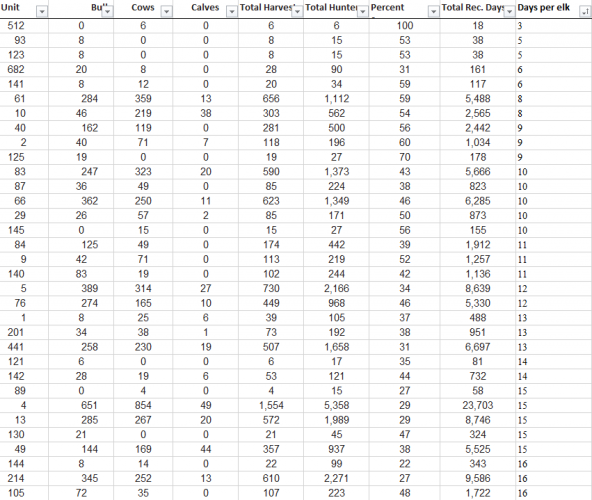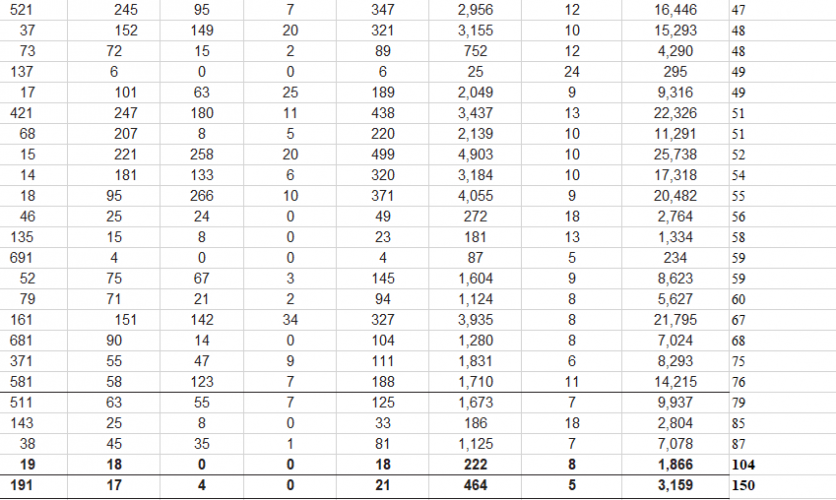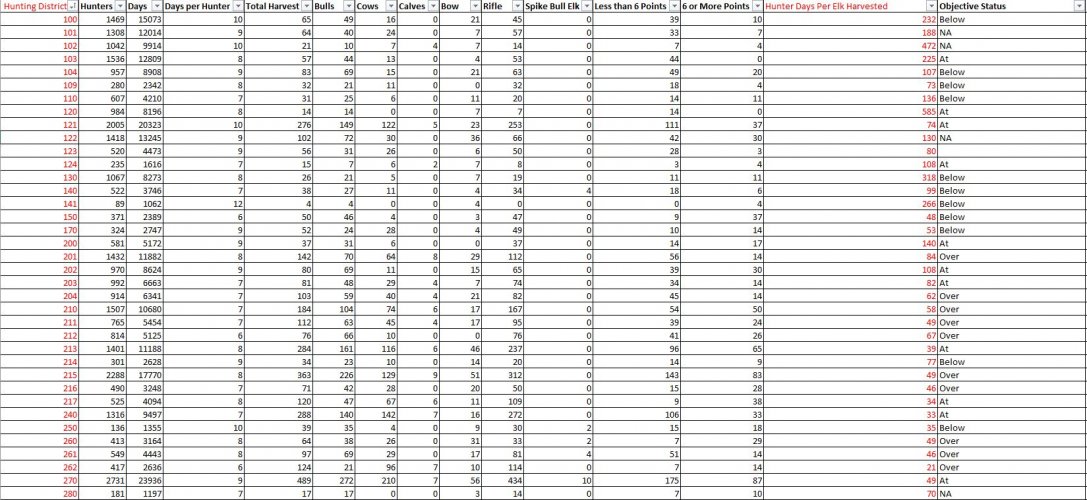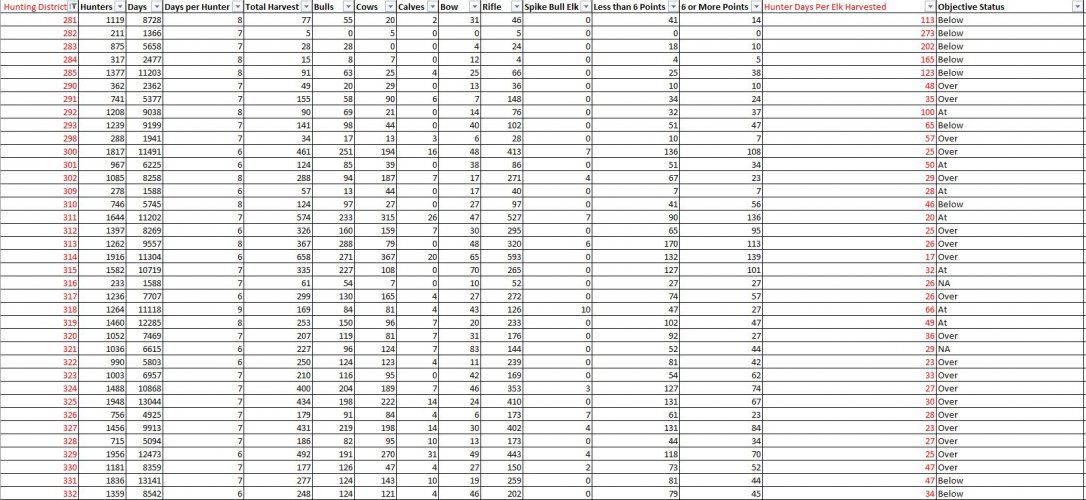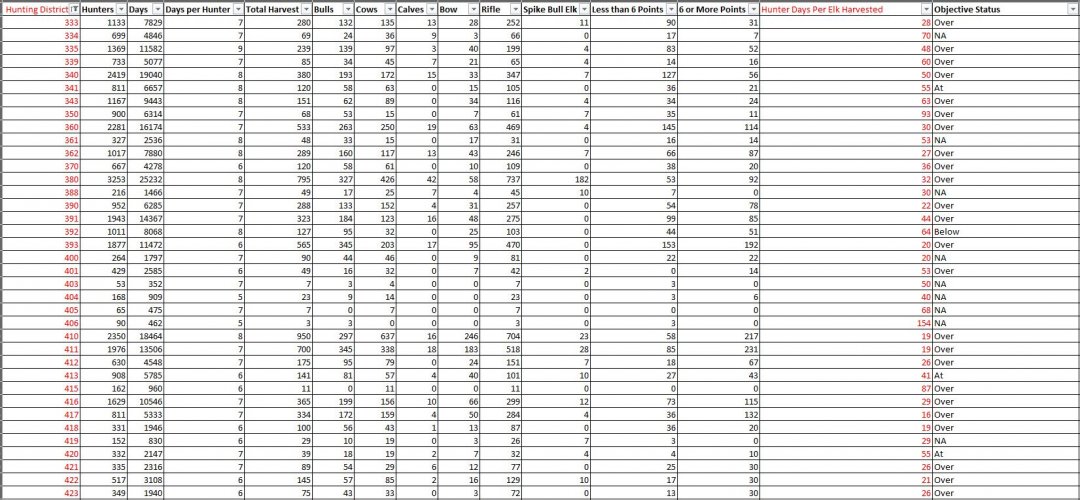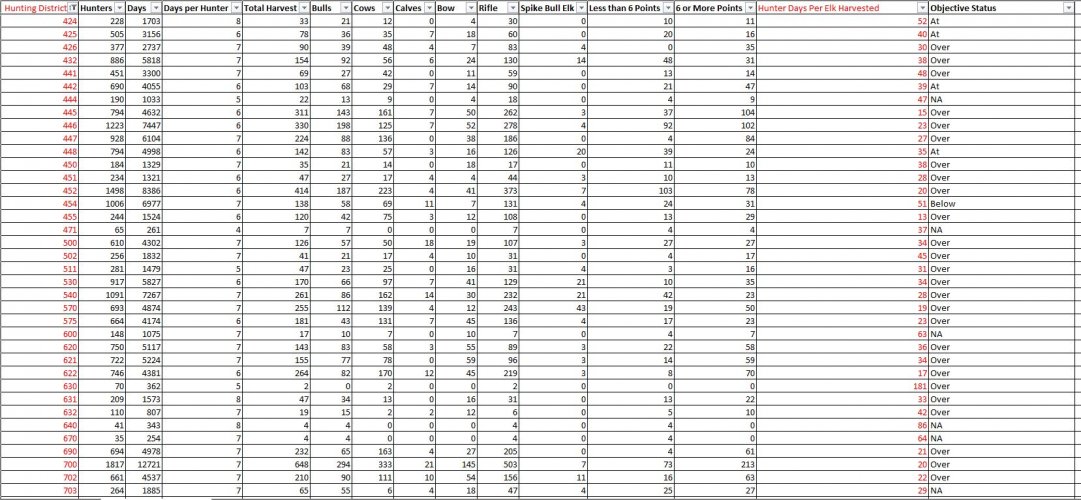Nameless Range
Well-known member
I have some time off of work today so figured I would share something I have been thinking about.
Many different metrics need to be considered when analyzing the health of a hunting district and the efficacy of management strategies and what that means for hunt-quality. We often talk about populations (raw numbers and objective status), success rates per hunter, etc. A stat I think can be incredibly meaningful that I don't see thrown around that often is Hunter-Days-Per-Elk-Harvested. Such a data point tells the closest thing we have to literal human energy per elk harvested and what hunters can expect. This data may be skewed in some districts, like the Elkhorns for example, because hunters may be pursuing an animal of a specific age class and thus passing on elk. Additionally, not all districts have the same tag management structure. Some allow a cow to be killed on a general tag and others do not. The fact is though, in most of Montana's hunting districts, an elk hunter will kill the first legal elk they have an opportunity to. I believe this to be a functionally-universal truth, with outliers to this maxim existing in the single digits percentage-wise. This data also controls for closeness to urban areas, or HDs that get hit hard. We may see HDs with a high success rate (harvests per hunter), but they may have a disproportionately high hunter-days-per-elk-killed (because they are close to population centers and thus easy for tons of hunters to hit repeatedly).
All the data I am referencing was acquired at this site: https://myfwp.mt.gov/fwpPub/harvestReports
I have attached .txt files that can be viewed in excel, each a different tab in the spreadsheet I am working in, breaking Montana's Hunting Districts down with the additional column of hunter days per elk killed for the 2020 season, as well as that district's 2020 objective status. There are tabs in the spreadsheet so folks can see the raw data, as well as data by status - all broken down by district.
I think this data could be useful when the official proposals for the merging of districts comes along. It could be the case the a district with abysmal stats could be combined with stats from another district that would obfuscate the true story on the landscape. I also think this will be critical data to point to as a new EMP comes along.
One district I looked closely at is one I enjoy spending time in and rarely killing elk in - HD 350. In 2020 in HD 350, a district considered "over objective" that is almost entirely public land or private land enrolled in block management, it took 93 hunter-days-per-elk-harvested.
(HD 350)
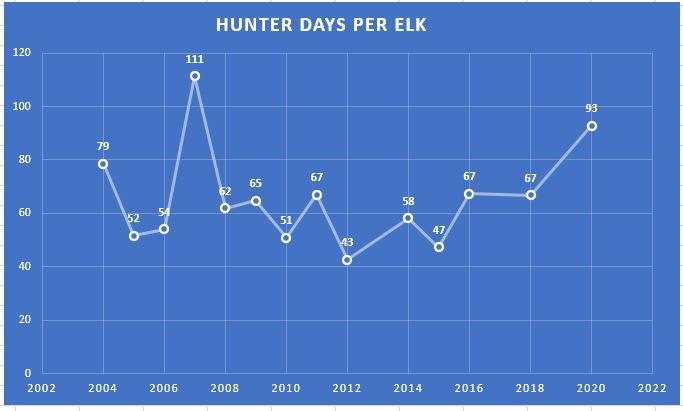
One could also look at things regionally:
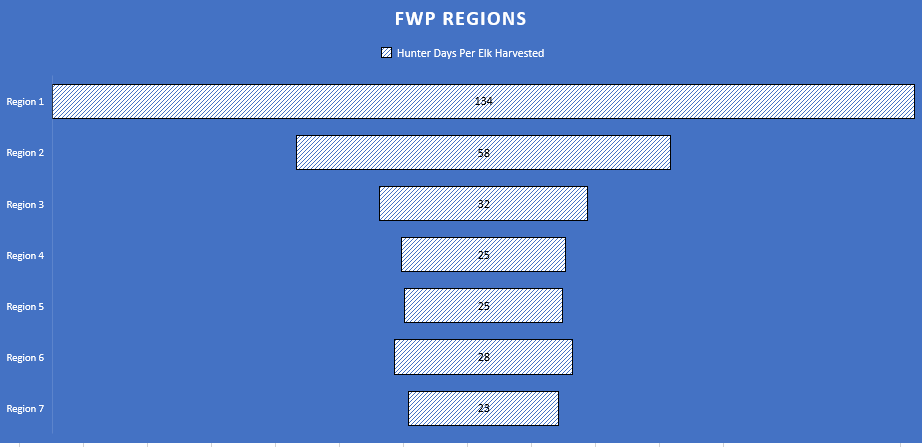
I want to be clear that all of this is 2020 data acquired using FWPs Harvest Report website. https://myfwp.mt.gov/fwpPub/harvestReports
Something I think could be meaningful, particularly as the new EMP comes along, is comparing Montana with other state's analogous data. Using the data in the spreadsheet, one could get as granular as hunter-days per bull or cow or calf. Would we find that Montana's "opportunity" really means abysmal chances at killing an elk relative to what our neighboring states offer? I don't know and would be curious. If anyone has such data for other states, feel free to share.
Many different metrics need to be considered when analyzing the health of a hunting district and the efficacy of management strategies and what that means for hunt-quality. We often talk about populations (raw numbers and objective status), success rates per hunter, etc. A stat I think can be incredibly meaningful that I don't see thrown around that often is Hunter-Days-Per-Elk-Harvested. Such a data point tells the closest thing we have to literal human energy per elk harvested and what hunters can expect. This data may be skewed in some districts, like the Elkhorns for example, because hunters may be pursuing an animal of a specific age class and thus passing on elk. Additionally, not all districts have the same tag management structure. Some allow a cow to be killed on a general tag and others do not. The fact is though, in most of Montana's hunting districts, an elk hunter will kill the first legal elk they have an opportunity to. I believe this to be a functionally-universal truth, with outliers to this maxim existing in the single digits percentage-wise. This data also controls for closeness to urban areas, or HDs that get hit hard. We may see HDs with a high success rate (harvests per hunter), but they may have a disproportionately high hunter-days-per-elk-killed (because they are close to population centers and thus easy for tons of hunters to hit repeatedly).
All the data I am referencing was acquired at this site: https://myfwp.mt.gov/fwpPub/harvestReports
I have attached .txt files that can be viewed in excel, each a different tab in the spreadsheet I am working in, breaking Montana's Hunting Districts down with the additional column of hunter days per elk killed for the 2020 season, as well as that district's 2020 objective status. There are tabs in the spreadsheet so folks can see the raw data, as well as data by status - all broken down by district.
I think this data could be useful when the official proposals for the merging of districts comes along. It could be the case the a district with abysmal stats could be combined with stats from another district that would obfuscate the true story on the landscape. I also think this will be critical data to point to as a new EMP comes along.
One district I looked closely at is one I enjoy spending time in and rarely killing elk in - HD 350. In 2020 in HD 350, a district considered "over objective" that is almost entirely public land or private land enrolled in block management, it took 93 hunter-days-per-elk-harvested.
(HD 350)

One could also look at things regionally:

I want to be clear that all of this is 2020 data acquired using FWPs Harvest Report website. https://myfwp.mt.gov/fwpPub/harvestReports
Something I think could be meaningful, particularly as the new EMP comes along, is comparing Montana with other state's analogous data. Using the data in the spreadsheet, one could get as granular as hunter-days per bull or cow or calf. Would we find that Montana's "opportunity" really means abysmal chances at killing an elk relative to what our neighboring states offer? I don't know and would be curious. If anyone has such data for other states, feel free to share.




